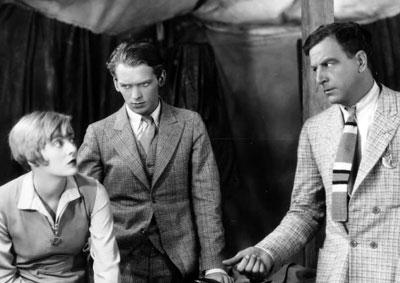A Program of Vitaphone Sound-on-Disc Short Subjects
The Archive's programs of Vitaphone shorts have been among the highlights of the last two UCLA Festivals of Preservation, and this installment promises to continue the fun.
A bit of explanation for the uninitiated: the Vitaphone Corporation was a company created by Warner Brothers in 1926 to develop sound motion pictures. From 1926 until 1930, Vitaphone filmed nearly 2,000 shorts in its studios in New York and Los Angeles. The film portion of these shorts was delivered to theaters accompanied by large phonograph discs that held the soundtracks. Once this technology became obsolete (replaced by optical soundtracks printed directly onto the film strip), Vitaphone shorts began to fade into oblivion. Restoring one of these shorts means locating elements in good condition for both the filmstrip and the sound disc, no mean feat given the physical fragility of both media
With interest in the popular entertainment of the Jazz Age on the rise, the time is ripe for a rediscovery of the talent, raucous energy and often true eccentricity of the performers featured in these Vitaphone selections. The emphasis this time is on comedy. One of the highlights of the 2004 program, comic duo Shaw & Lee returns, while another comic duo, Jans & Whelan, also makes an appearance. Even bandleaders Dick Rich and Jack White deliver jokes between numbers. Broadway is represented by Adele Rowland, a singing stage star of the 1900s and '10s. The program begins with a performance by famed vocal group the Revelers. the inspiration for Germany's Comedian Harmonists.
–David Pendleton
Restored in collaboration with The Library of Congress and The Vitaphone Project from 35mm nitrate original picture negatives, 35mm acetate fine grain master positives and Vitaphone sound disks. Laboratory services provided by The Stanford Theatre Film Laboratory, The Library of Congress Recorded Sound and Video Laboratory, Audio Mechanics. DJ Audio. Special thanks to: Larry Appelbaum, Jim Bedoian. Simon Daniel. Gene DeAnna. Robert Heiber. Ron Hutchinson. Mike Mashon, Janet W. McKee, Peter Oreckinto, John Polito, Andrew Starbin, George R. Willeman, Ken Weissman.






 Mobile Navigation
Mobile Navigation

